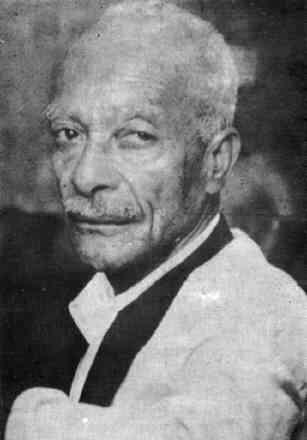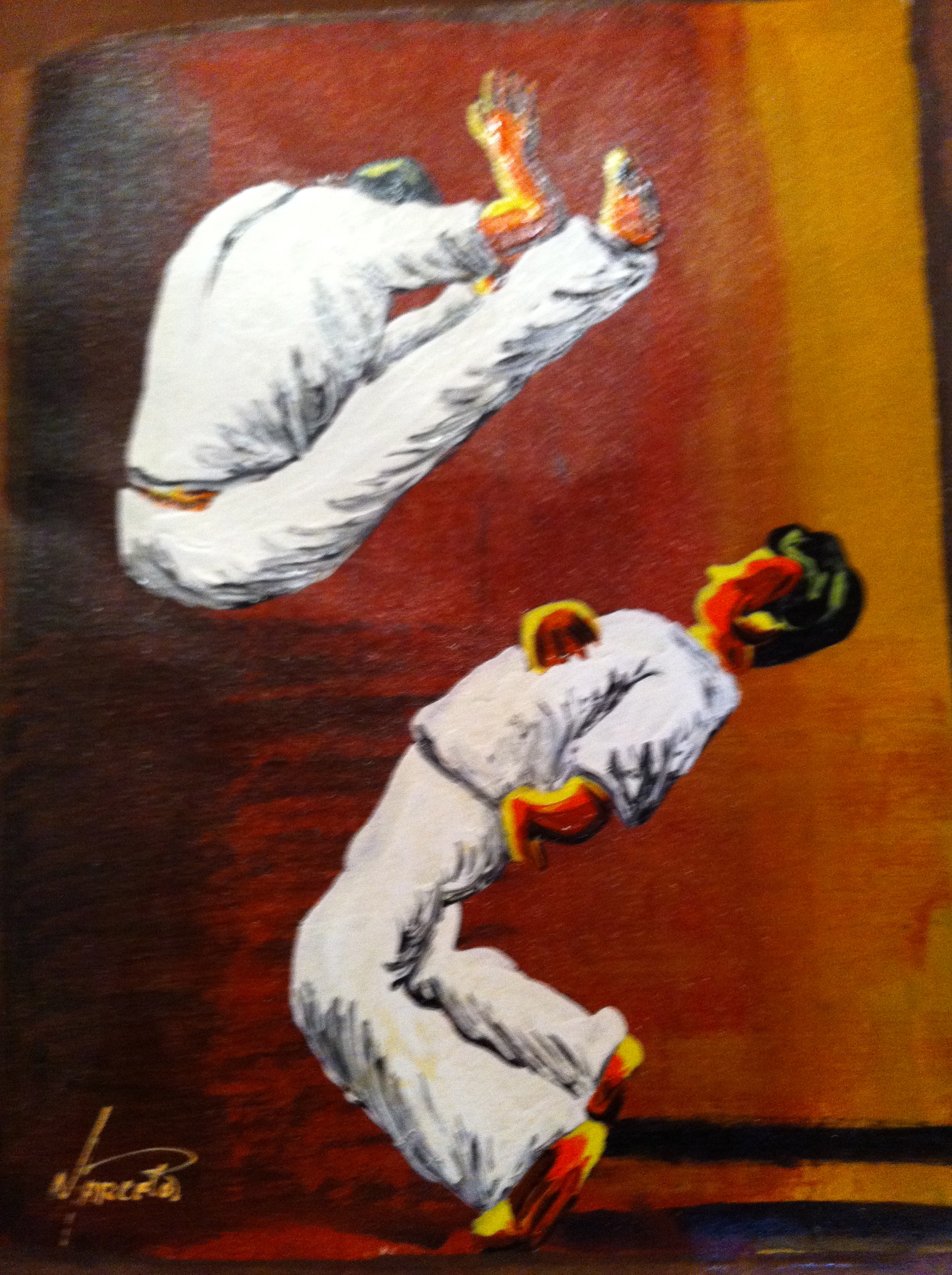Vicente Pastinha 1889 – 1981 “Master of Capoeria Angola”
“Master of Capoeria Angola”

Mestre Vicente Joaquim Ferreira Pastinha was a master practitioner of the Afro Brazilian martial art of Capoeira. In the period 1850-1950, he and Mestre Bimba were the most respected and greatest proponents of this fighting art and culture. Pastinha was solely devoted to the practice of pure Capoeira Angola. He disagreed with Regional Capoeira.
Capoeira developed in the 16th century in Brazil, mainly by West African descendants with native Brazilian influence, which is deeply rooted in African culture. It is known for quick and complex moves using power and speed, and leverage for kicks, spins, and mobile techniques. It is sometimes referred to as a game combining elements of dance, acrobotics and music, or as a conversation between two persons.
Pastinha was exposed to Capoeira at the age of 8 by an African named Benedito. The story goes that an older and stronger boy from Pastinha's neighborhood would often bully him. One day Benedito saw this aggression that Pastinha suffered, and told him to stop by his house because he was going to teach him a few things. In his next encounter with that boy, Pastinha defeated him so quickly that the older boy became his admirer. From then on, Pastinha had a happy and modest childhood. In the mornings he took art classes at the Liceu de Artes e Ofício school; afternoons were spent playing with kites and Capoeira practice. He trained with Benedito for 4 years. Pastinha was a brilliant Capoeirista whose game (the conversation between two persons) was characterized by his agility, quickness and intelligence. Pastinha wanted his students to understand the practice, philosophy and tradition of pure Capoeira Angola: "I practice the true Capoeira Angola and in my school they learn to be sincere and just. That is Angola law. I inherited it from my grandfather. It is the law of loyalty. The Capoeira Angola that I learned - I did not change it here in my school. They know that this is fighting and cunning. We must be calm. It is not an offensive method of fighting. In Capoeira we wait for the opening to happen. The good Capoeirista must know how to sing, play Capoeira and the instruments of Capoeira."
Mestre Pastinha initially taught Capoeira mainly to his colleagues from the Marines , where he began working the age of 12. When he got out of the Marines at age 20 he opened his first Capoeira school. Later, in 1941, he founded the center of Capoeira Angola. It was his first Academy school, and discipline and organization were mandatory.
Capoeira originated in the streets, and then gradually moved indoors, i.e. to classrooms, or demonstration centers. A civil servant, Manuel dos Reis Machado changed the course of Capoeira. He set new standards in the art, emphasizing the fighting aspect while adapting it to society’s reality. After Capoeira was taught in schools it be came a national discipline.
came a national discipline.
Capoeira is a Brazilian martial art combining elements of dance, acrobatics, and music. It is an eclectic martial art with a variety of techniques that make use of the hands, feet, legs, arms, elbows, knees and head. Some techniques are for floor movements, while other circular movements are used for evading attacks. There are hard attacks including head butts, punches, and kicks, and softer attacks such as takedowns and sweeps. The form of Capoeira is different today than the historical version. The continuous rocking back and forth to swing is the fundamental footwork called jinga no it’s up to you guys ever think of the glue, the constant triangular pattern meant to confuse. The main purpose is to prepare the body for evading, fighting, or diverting attacks through constantly shifting stances.
Pastinha dedicated his life to Capoeira Angola. He became one of the resources in Afro-Brazilian culture. In 1966, he participated with the Brazilian delegation of the First International Festival of Artes Negras in Dakar, Senegal.
Eventually his school fell on hard times, and he was asked to leave the school for renovations. It was never returned to him. He died at age 92, blind, given up by the public organizations and most of his old friends. Pastinha was survived by two of his most learned students: Joao Grande and Joao Pequeno (died 2011) who continued to share Capoeira Angola with the world. Pastinha’s school was the most influential in shaping today’s Capoeira Angola.
To learn more about Capoeira, Please check out Capoeira by clicking the image below.
